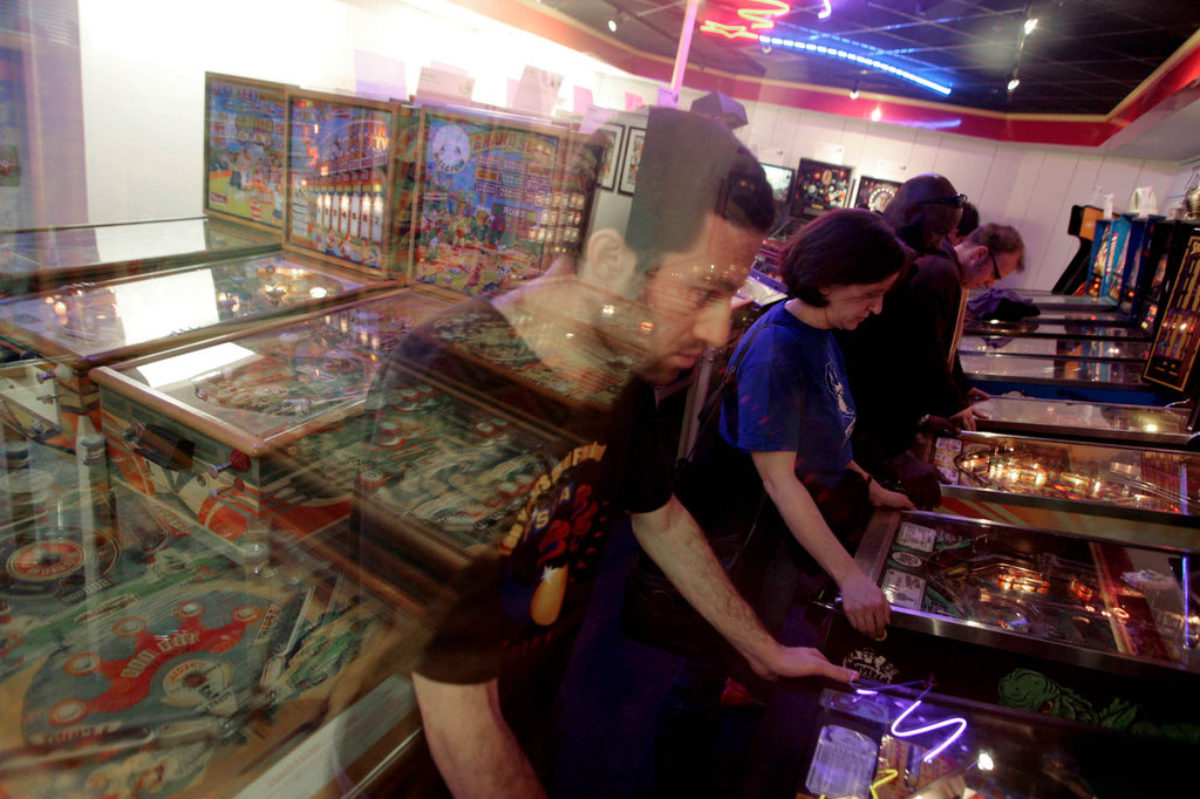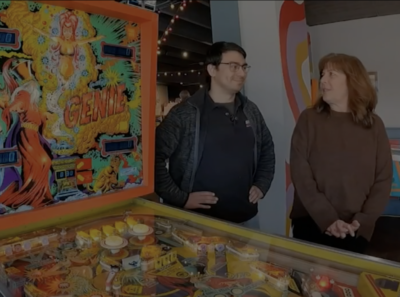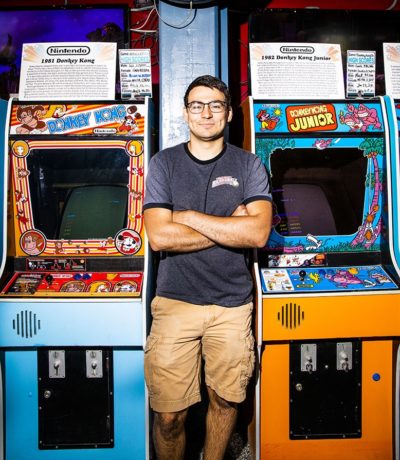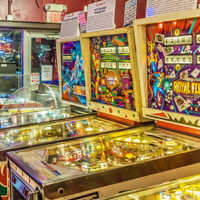By HUGH RYANDEC. 17, 2010
STEP inside the Shops at Georgetown Park, a shopping mall in Washington, D.C., and you’ll find two nine-foot-tall flippers and a giant floating silver ball. It’s not a piece of public art — it’s the entrance to the new National Pinball Museum.
The museum (3222 M Street NW; 202-337-1100;nationalpinballmuseum.org), which opened on Dec. 4, is one of three shrines to the game that have lit up around the country over the last two years.
“I wanted people to get a real in-depth sense of what pinball was and is,” said David Silverman, executive director of the museum.
In depth indeed.
At the museum, no aspect of the game is left unexplored. The pièce de résistance, though, is a series of meticulously recreated rooms representing important moments in pinball’s development, from the French chateau where bagatelle, the game’s precursor, was invented in 1777, to the American workshop where the first game with flippers was made in 1947.
A brief history: Early versions of pinball first arrived in America with French soldiers fighting in the Revolution. It gained popularity as cheap entertainment during the Depression. When manufacturing exploded after World War II, flippers and lights were added. And as microchip technology developed, the games transitioned to solid-state computing.
“You’re seeing the development of an entire culture,” Mr. Silverman said.
The museum also features a small theater, a pinball parts and gift shop, and, of course, a game room with 40 rotating machines from Mr. Silverman’s private collection.
That might sound impressive, but it’s small compared with what awaits visitors at the Silver Ball Museum in Asbury Park, N.J. (1000 Ocean Avenue; 732-774-4994; silverballmuseum.com), where over 200 playable games sit just off the boardwalk.
Each game has a placard illuminating a bit of its history, but none sit behind glass or in exhibitions. In this way, the Silver Ball is equal parts arcade and museum.
“You can’t separate the two if the games are working,” said Rob Ilvento, who founded the museum in 2009. It moved to its current boardwalk home in early 2010, and Mr. Ilvento hopes to expand to include vintage arcade and kiddie rides in the next few years, as well as a carousel and an even more expansive selection of games.
The science of the game is the focus at the Pacific Pinball Museum(formerly the Lucky JuJu Pinball Arcade), which opened at the end of 2008 in Alameda, Calif. (1510 Webster Street; 510-769-1349;pacificpinball.org).
“There’s a wealth of scientific phenomenon inside pinball machines,” said Michael Schiess, the executive director. “There’s gravity, there’s obviously magnetic and electrical theory, there’s circuit design.” (To that end, Mr. Schiess rebuilt a regular machine into an exhibit he calls “Visible Pinball,” an entirely translucent game that shows how pinball works.) All three museums hope to keep pinball alive for collectors and aficionados, and to introduce the game to a generation of kids who may only know it from computer simulations.
“It gave me such a glimmer of hope to see these kids really getting into it,” said Mr. Silverman of the National Pinball Museum. “You can get it on a computer, but playing a physical game? That’s a whole different thing.”







